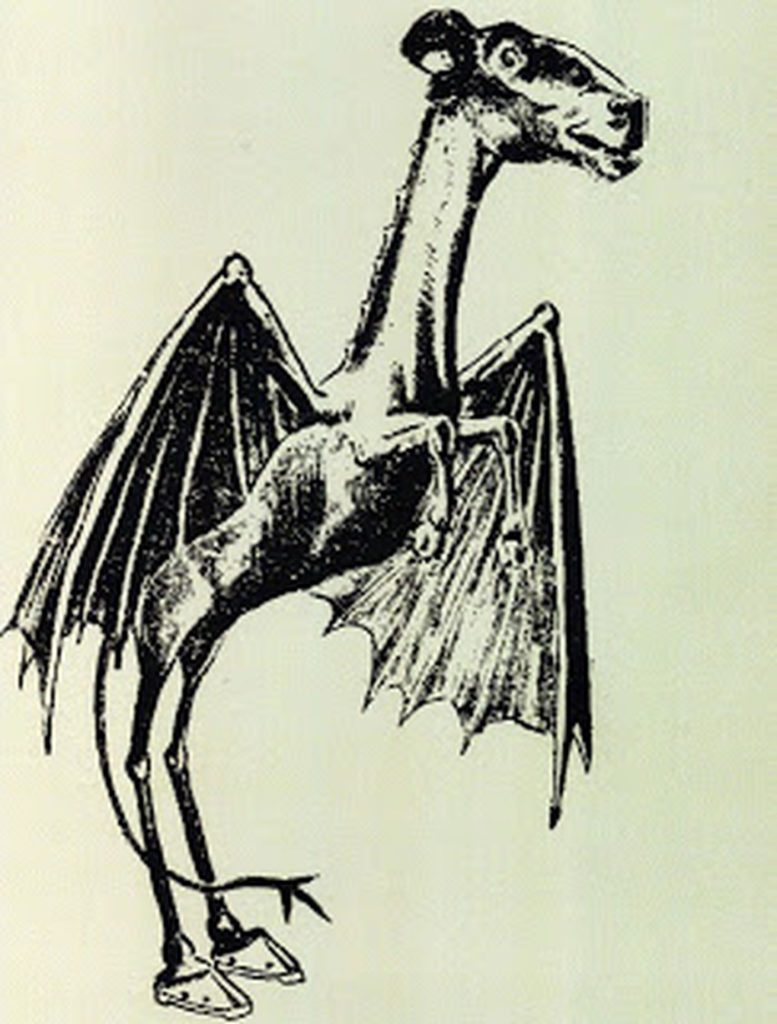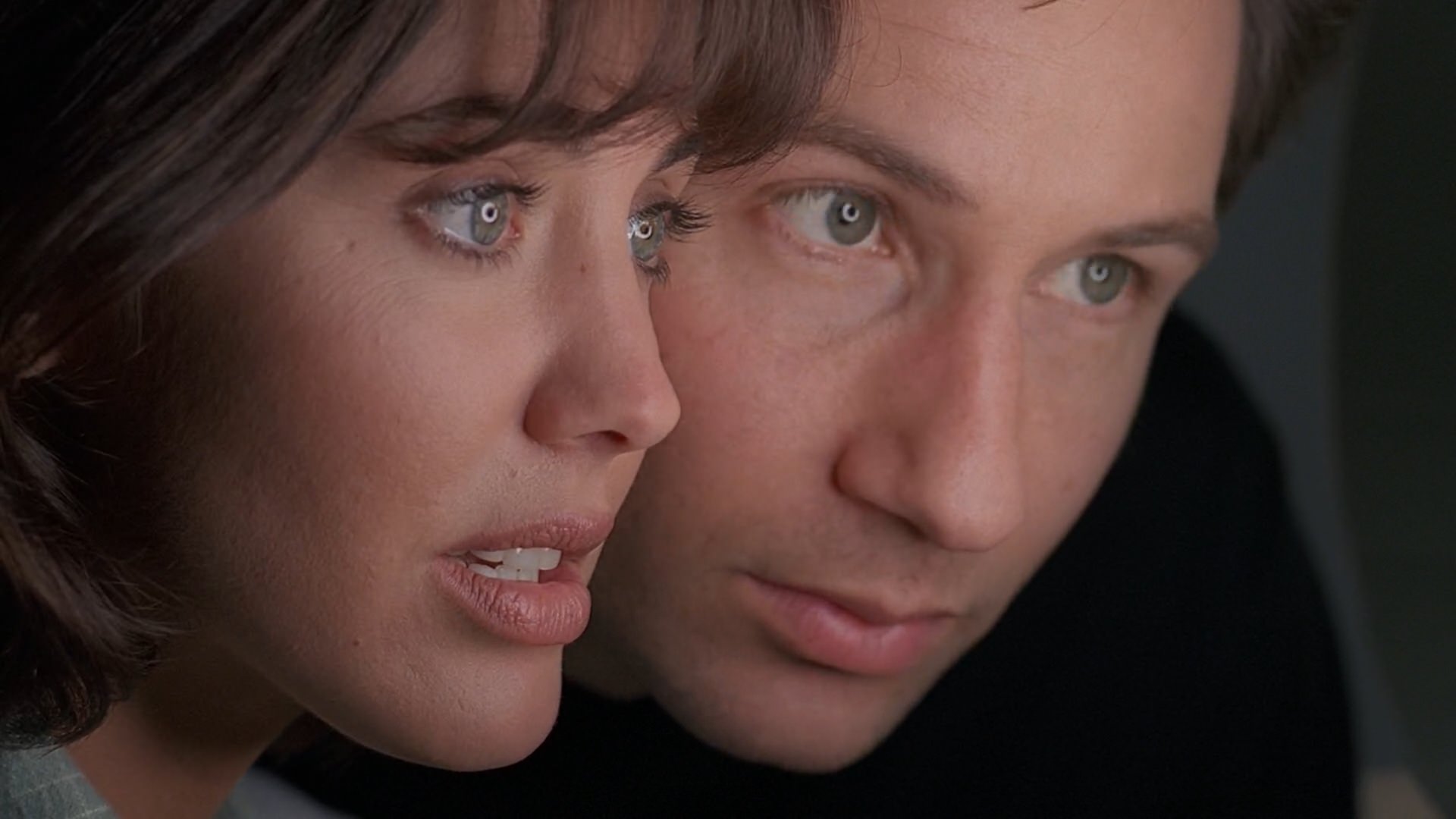Against The X-Files
Very few series succeed in generating the sort of mass fan hysteria seen so quickly with regard to ‘The X Files’. Even ‘Star Trek’ took a relatively long while to build up a cult following, but within two seasons, Chris Carter’s baby acquired a horde of rabid, devoted fans, the “X-philes”, endlessly poring over fine details of the show, down to the colour of Dana Scully’s underwear. But is the show worth it? Frankly, no. It may be the best thing on American television, but that’s scarcely saying much. And while there have undeniably been memorable episodes (The Erlenmeyer Flask, E.B.E.), the vast majority are far more forgettable, with some pure dreck.
Let’s take a look at one such, possibly the worst to date, ‘3’, dealing with a group of modern-day vampires, which showcased some of the major weaknesses in the series. This was the first episode after Dana Scully’s abduction which, as any sad bastard will tell you, was caused by her pregnancy. The producers had to spend several shows trying to conceal it, with amusing, escalating desperation: first, baggy clothes; then, only close-ups; and finally, she had to remain stationary, her walk presumably too much of a waddle. This ludicrous farce eventually ended, though one can imagine Chris Carter’s anguished squeal as they wheeled her into the delivery room: “Come back, Gillian, we’ve still got five scenes to shoot!”. It’s understandable why they kept her on; the relationship between the two agents is the show’s strongest element. In ‘3’, and indeed most of the partner-less episodes, Mulder flails around like a landed fish, operating in a vacuum when no-one says “But surely there must be a rational explanation for all this”.
At least Mulder’s solo pursuits made a nice change [though the series’ heavy debt to ‘Kolchak’ was clear]. The series has been remarkable for sheer predictability, the majority of episodes follow a single form: Scully and Mulder investigate something; he comes up with a way-out theory, she doesn’t believe it, but he is inevitably shown to be right. With this hyper-natural ability to solve cases, you wonder why the FBI have him looking at Forteana. Give the man a week, he could probably catch every serial killer going. It would be nice, just once, to have a prosaic explanation. For instance, researchers estimate at least 95% of UFO’s are misidentifications of normal objects, so you think Mulder would stumble across J.Allen Hynek’s “swamp gas” now and again. The other series cliché is the final five minutes: the evidence will be lost, destroyed, stolen, bent, torn or mutilated, and Mulder has no proof of what happened. It strains credulity way past breaking point.
The vampire episode was a perfect example, albeit with a sceptical LA cop replacing Anderson’s sceptical FBI agent. The finale has the blood-suckers conveniently incinerated — what a surprise. The only unexpected twist was that we didn’t get the near-compulsory torch-lit forest ramble, and the most entertainment was watching the struggle to make a small fragment of Canada look like Los Angeles. [In the earlier episode allegedly set at the Arecibo telescope, all the signs had ‘Puerto Rico’ at the bottom — a touchingly naive attempt to convince us it wasn’t just the same coniferous woodland with a tape of tropical insect noise added].
Our vampire episode also demonstrated the tendency for the series to seek “inspiration” from classic SF/horror films; anyone who’s seen ‘Near Dark’ will have spotted bits of the film poking out. One vampire was even a Kiefer Sutherland look-alike! This fondness for homage is frequent, notably in ‘Ice’, with an alien life-form insidiously taking over a polar base, a cast member at a time, and no-one knows who is infected. Er, John Carpenter’s ‘The Thing’? Right down to one victim being a dog, just without the stunning FX which made the movie so memorable. In comparison, The X Files were pallid, and toned-down for TV in every way.

Perhaps the poorest section in ‘3’ had Mulder discovering an ink stamp from a club on the skin of a dead vampire. He went along to the “wittily” named Club Tepes (as in Vlad Tepes, a.k.a. Vlad the Impaler, a.k.a. Dracula, hoho), where the music was nice ‘n’ quiet — mustn’t interfere with the dialogue — and at the same volume regardless of where he was in the establishment. Have these guys ever been to a night-club? Wheel on the tired Goth clichés, and lo, the first person Mulder talks to, happens to be the episode heroine. Having a character called “Spooky” apparently lets you get away with any ridiculous plot twist you want to foist on the audience.
This failure to get details right pervades whole episodes; one involving a malevolent computer provoked hoots of derision here for its wildly inaccurate portrayal of technology, harking back to bad 60’s thrillers. Makes you wonder just how much bull they spew with respect to the fields of parapsychology and UFO research. Basically, Carter and team can cook up anything they want to, and do — I imagine many viewers now think the New Jersey Devil looks like Daryl Hannah did in ‘Clan of the Cave Bear’, a cutely smudged wild-girl.
I admit the show has strengths. It’s nice to see paranoia and it’s adherents, portrayed in a good light, and labyrinthine, tenticular government has never been so well demonstrated. Plus the in-jokes are amusing [I’ve heard rumours that Duchovny and Carter are big porn fans…]. But — for the real paranoiacs — is the whole thing a PR exercise for the FBI? It’s not the first such whitewashing by a long way; from ‘The Untouchables’ on, the FBI have been the bastion of truth, justice and the American way. Compare and contrast how the CIA are portrayed in the media: inevitably, scummy and hateful. David Duchovny and Gillian Anderson follow the Kyle McLachlan tradition of cuddly, lovable FBI agents. No-one would have qualms about letting them into any aspect of their lives. The X Files works, very nicely thank you, as propaganda for a police state. Bear that in mind next time you watch it.
Pleasant dreams. And remember, The Truth Is Not There…
[The Smoking Man]
